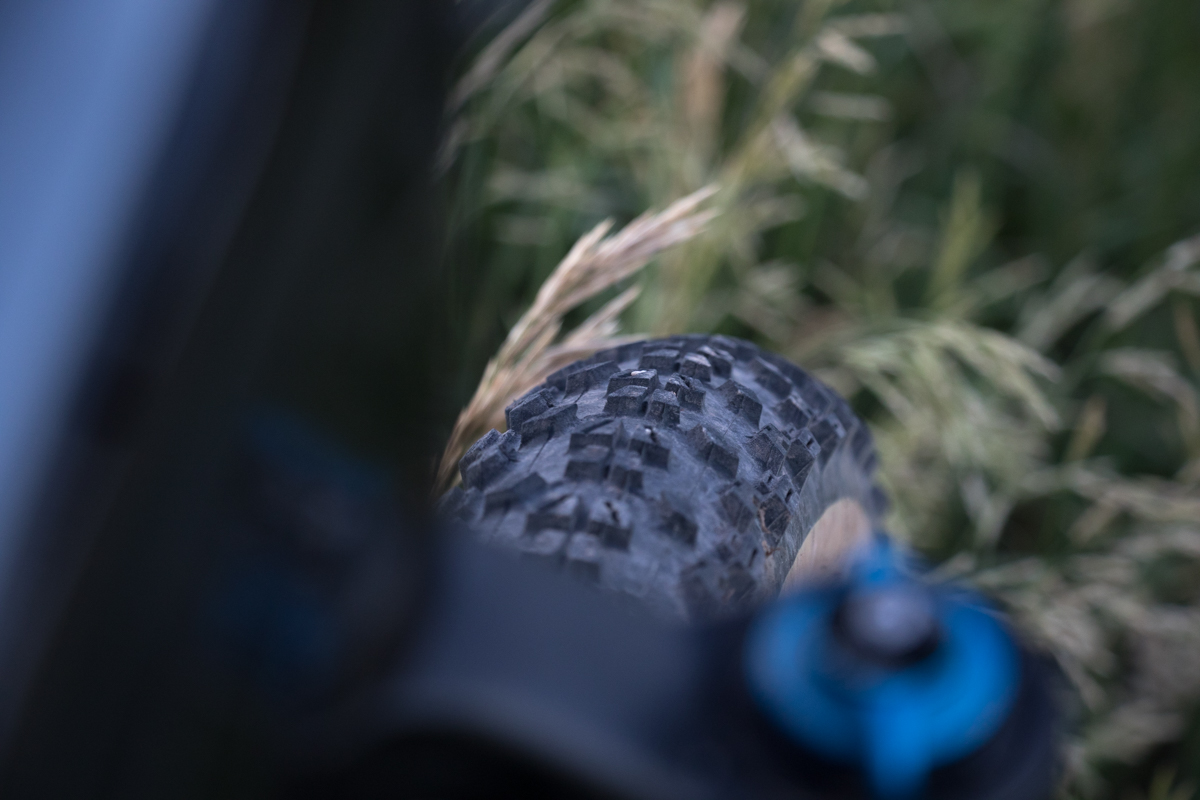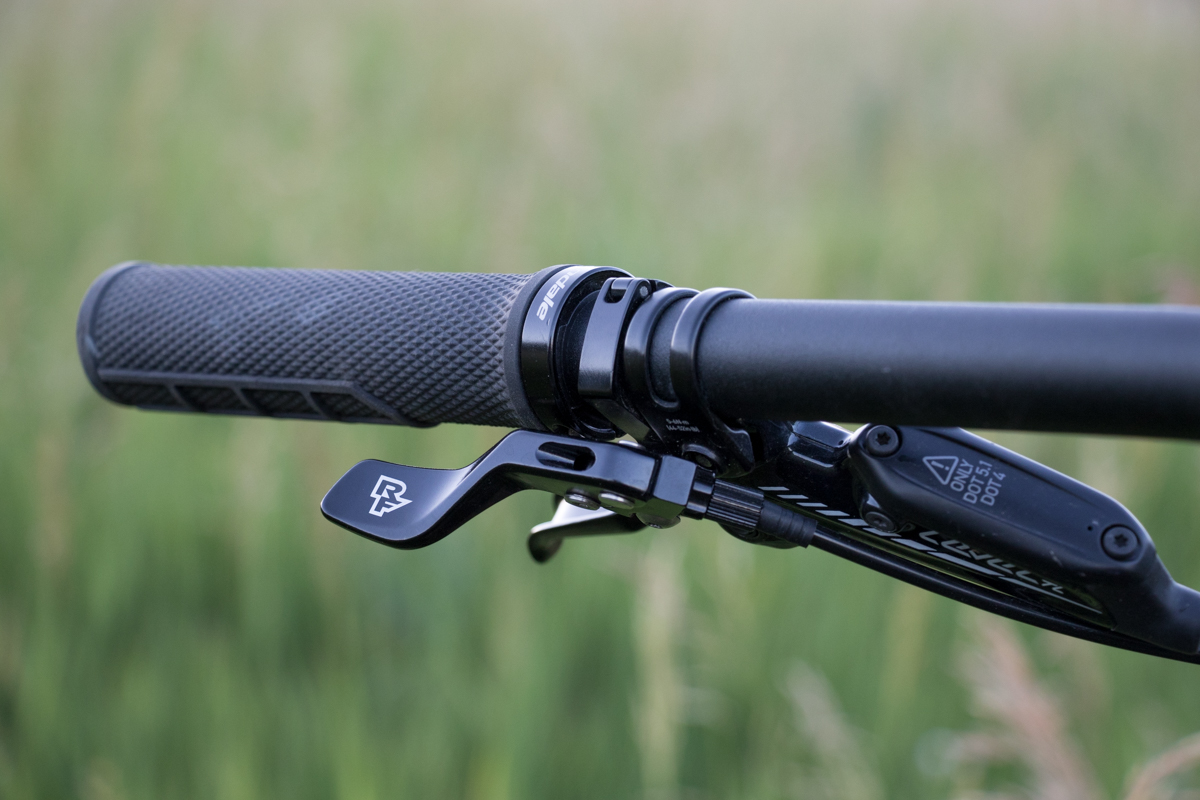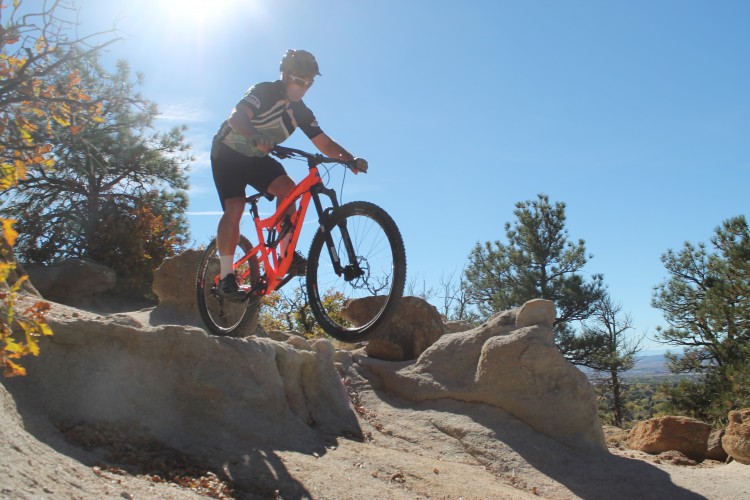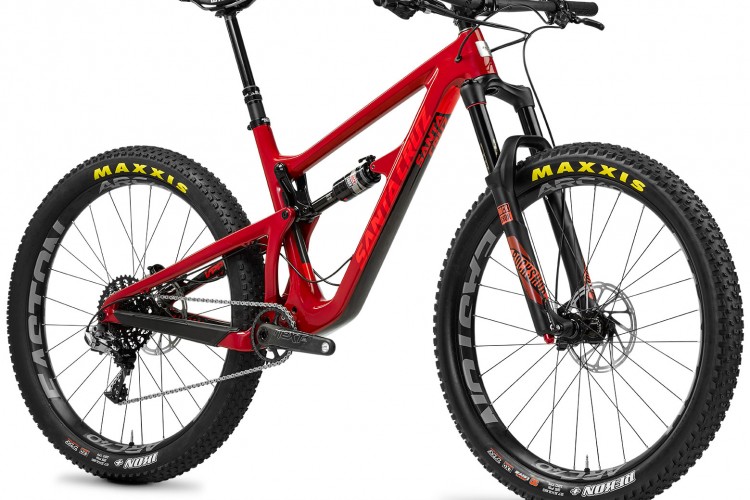
It’s not that I don’t like 120mm bikes, but like many others I tend to stick with long-travel, do-it-all bikes that can potentially replace an entire stable. I’d use the “Q” word, but it’s played out.
The problem with long-travel, all-mountain bikes is that they don’t do it all very well. They descend exceptionally well, but most of the time, climb as if nothing depends on it. The Cannondale Scalpel SE-2 comes at this dilemma from a different angle, or a more popular angle for XC bikes now. Why not keep the climbing ability, and make it descend better, instead of the other way around?
And, that’s the intent of the SE2. Compared to the standard issue Scalpel, Cannondale ditched the Lefty for a Fox 34 with 20mm more travel, and pulled 15mm more travel out of the rear. It’s also got a more aggressive component package, which keeps the bike light, and adds confidence. Did they hit the mark? Let’s take a deeper dive and find out.
Specs
- Full carbon frame with PF30 bottom bracket
- 120mm/115mm front/rear travel
- Fox 34 Performance Elite with Fit-4 Damper, 110x15mm axle, 51mm offset
- Fox Float DPS Evol rear shock
- SRAM GX Eagle 12-speed drivetrain, 10-50t cassette
- SRAM Level TL brakes, 180mm front,160mm rear brake rotors
- Stan’s Arch wheels with Formula hubs
- 2.4″ and 2.25″ Maxxis Ardent tires
- RaceFace Aeffect 31.6mm dropper post
- Cannondale cockpit with 760mm wide bars and 60mm stem
- Weight: 27.4 pounds, size medium without pedals

Geometry (size M, tested)
For the Scalpel SE2, the longer travel and increased demands of the bike call for a few changes from the normal Scalpel-Si. The head angle on the SE2 is a degree slacker and the seat tube angle is a degree and a half slacker compared to the standard Scalpel. Reach is also 16mm shorter, but the wheelbase is 7mm longer.
- Head tube angle: 68.5°
- Seat tube angle: 72°
- Standover height: 779mm
- Wheelbase: 1,125mm
- Chainstay length: 436mm
- Bottom bracket height: 345mm
- Reach: 408mm
Riding the Scalpel

My first ride on the Scalpel wasn’t any sort of normal mountain bike ride. Read about it here, but in short, it was a wet, and generally flat mix of urban, Atlanta trails. The next day, I rode it on the Coldwater Mountain trails in Anniston, Alabama. The climbs were moderate and the descents were flowy, and chunky to very chunky in spots.
After that, I took the bike back to my home trails in Golden, Colorado and have mostly been riding it around here, on trails like Apex, White Ranch, Green Mountain, Three Sisters, Chimney Gulch, North Table Mountain, and a good bit of singletrack up in Winter Park. All of these range from smooth and buff stuff, to boxy and rocky.
Climbing
On most of the climbs I rode with the Scalpel, I mashed the pedals uphill as hard as I could, and the bike responded like a bull-whipped horse. It loved power input going uphill, and I couldn’t help but trying to break all my old climbing PRs, which happened several times.

I kept the Fox Float DPS shock in the middle setting for most of my riding. On smoother climbs, or fire roads, I locked it out. But even the middle setting gave the bike a very firm feel on the climbs, with the right amount of sag, and no noticeable pedal bob. Climbing with the shock in the open setting did give me a bit of pedal bob, but I only put it in the open setting to experiment with the feel. Other than that, it’s exceptional in the middle setting.
The slack seat angle does become noticeable on the Scalpel. It didn’t bother me pedaling hard on flat trails, it didn’t bother me on mild or even moderate climbs, but it does show up on steep climbs. I felt like I needed to hug myself into the handlebars and top tube, more than I usually would, to stay centered and keep weight on the front. Again, it was only an issue on steep climbs.
Descending
Here’s where I was pleasantly surprised. Before hopping on to the Scalpel, I expected a rigid, anxious descent. I thought rock gardens would push back and that I’d fall face first on steep descents, but I got the opposite effect.

Now, the Scalpel isn’t a rock garden crusher. You won’t plow through boulder fields, but you will dance over them with enough confidence to keep a good amount of speed.
The bike was happy to go sideways around corners, and thanks to the slack seat angle and short chainstays, it was a blast to wheelie.
For the maximum amount of fun on the Scalpel SE2 though, find the nearest jump and flow trail. With its progressive, short travel suspension and stiff frame, it’s uber-confident through berms, the suspension and frame are pre-loaded for jump takeoffs, and the bike is predictable through the air.
The suspension felt bottomless at times and very progressive. I rarely made it through all of the travel, except on drops to flat. I kept the rear shock on trail mode for most of my descending also, but opened it up from time to time on loose and rocky descents to keep the tires planted.
I was also pleasantly surprised when I broke some old descending PRs on the Scalpel that were last set on my 170mm/150mm front/rear, 27.5-inch enduro bike. They were on moderate, buff, and slightly chunky descents, where the Scalpel picks up speed very quickly and holds it.
Component performance
Tires
Maxxis Ardents are a bit lighter than what I like to spec on my own bike, but I had no issues with them during testing. Cannondale sized them according to modern standards with a 2.25″ in the rear and a 2.4″ up front. The tires have a consistent, round profile and never skipped a bit when laid over in corners.

Suspension
Holy cow, the Scalpel felt harsh on my first few rides. I kept dropping air pressure in the Fox 34, but still couldn’t find a sweet spot. Finally, I yanked the top cap off of the fork and found five volume spacers underneath. No wonder it felt harsh.
I’m only about 160 pounds and not Richie Rude, so I settled on two tokens and about 68-70 psi. With that, I got close to full travel when I needed it, and a solid ramp up at the end of the stroke.
The fork offered sensitivity at the top and a solid mid to end stroke, and never felt flexy pushing into rocky sections. With five volume spacers in it, the fork generates a considerable amount of compression noise, akin to an angry hamster, but with two volume spacers and the right air pressure, the squeals were soothed quite a bit.

I found the rear shock to have a very progressive feel, and rarely used the final 20% of the travel.
Drivetrain
There isn’t a whole lot to say here. The GX Eagle is a solid 12-speed drivetrain and it’s hardly surprising that SRAM’s budget-friendly bird is running the show. The shifts are crisp and I appreciate the added range on some of the steeper climbs in Colorado.

Wheels
I found the rear hub a bit lacking in my tests. The engagement wasn’t near what I would have expected for a bike in this price range. But, it looks like Cannondale does equip their bikes with better hubs beyond the $5,000 price point. This wasn’t a huge deal for me, but it is noticeable trying to find engagement at high speed. Once the hub engaged, I was met with the “dunnngg” sound that I associate with inexpensive hubs.
Brakes
The SRAM Level TL brakes were a bit hot and cold for me. SRAM touts their reach adjustment on the TLs as something that is out of the way on purpose, for a clean look. But, they were just a pain to adjust and it was mandatory to remove them from the handlebars to do so. If you’re a “set and forget” type of person, then don’t worry about it. But for me, it was a hassle finding the right reach on the first few rides.

Because I’d never done an XC race before and I’ve been feeling foggy in the cardio department this season, I jumped into a race on a Saturday in June aboard the Scalpel SE2. It was on a fast and rowdy five- to seven-minute descent that the front brake faded completely. Coming out of a turn, I did my best to pump the front up to get it back before the next turn, but it didn’t come back until the next climb. It never faded completely on me again, but there were other times when it faded a little.
Dropper post
The RaceFace Aeffect dropper post gave me a little trouble as well. I found the post goes up and down fine, though maybe not as quickly as other posts. The problem was making adjustments to the seat post height. If I pulled the post up or pushed it down into the seat tube, it lost engagement with the remote. I’m wondering if the stock cable length is too long for the bike, or if there was an assembly issue with my bike. While it’s annoying, this can probably be fixed by a skilled mechanic.

Other than that, the remote on the Aeffect is pretty flimsy. It’s slick and doesn’t offer a lot of grip, and it just feels a bit cheap. Functionally, aside from the issues with the cable, the Aeffect post worked fine.
Conclusion
The 2018 Cannondale Scalpel SE2 is a bike that can handle long days in the saddle, including all the long, challenging descents along the way.
MSRP: $4,499.99 USD.



















